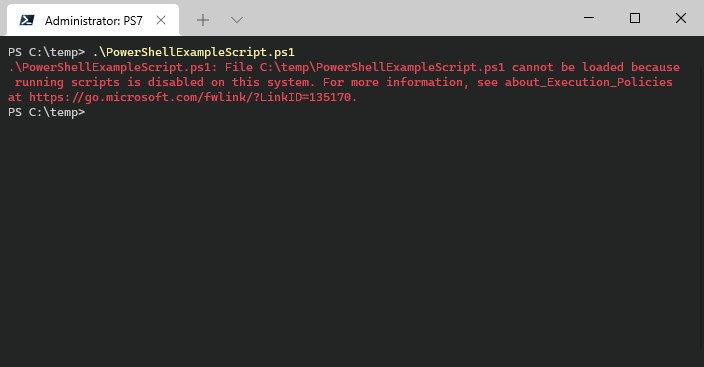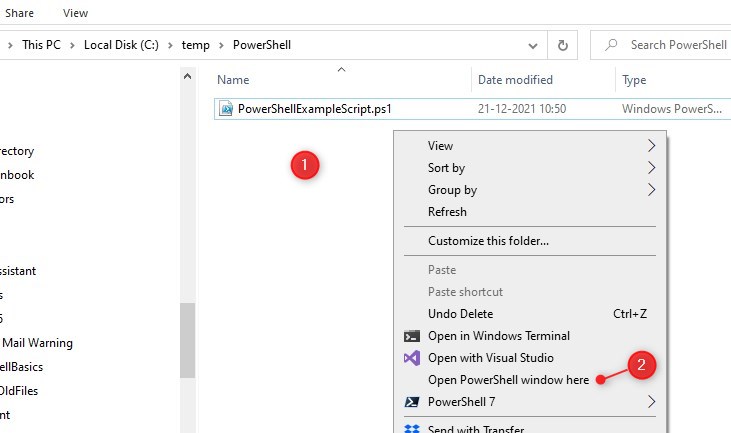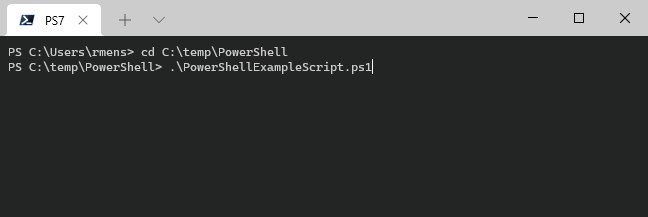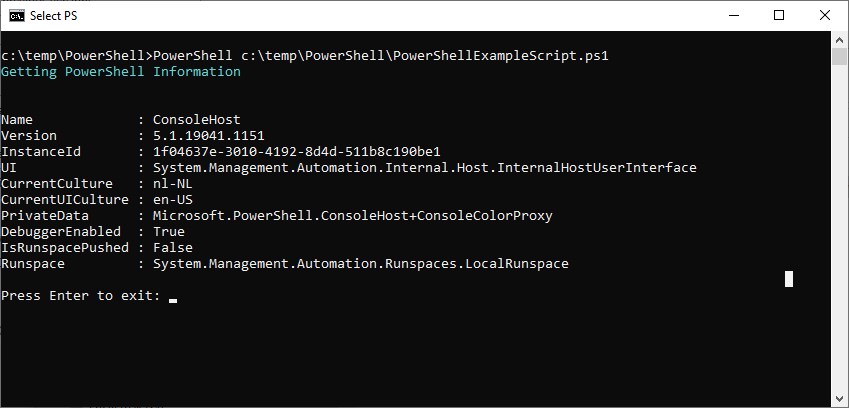How To Run Powershell In Windows Xp
PowerShell scripts are a not bad manner to automate tasks, assemble information, or change backdrop in bulk. Well-nigh PowerShell commands are only a single line which you lot can just copy and paste in PowerShell. Just how practice you run a complete PowerShell Script?
There are a couple of options when it comes to running PowerShell scripts, just from the cmd, using the PowerShell ISE, or even a scheduled task.
In this article, I will explain the different options to run a PowerShell script. As well, I will help you lot with the common errors, like "running scripts is disabled on this system".
Gear up Running Scripts is Disabled on this Organization
Nosotros are going to start with a common error that prevents most users from running a PowerShell script, the error "Running scripts is disabled on this organization". This mistake is caused by the PowerShell Execution Policy.
Past default, the PowerShell Execution policy is set to Restricted. This ways that PowerShell scripts won't run at all.

So to run a PowerShell script, we first need to modify the execution policy. For the policy we take a couple of options:
| Execution Policy | Description |
|---|---|
| Restricted | Default option – does not allow to run any PowerShell script |
| Unrestricted | Can run any script, shows warning for downloaded scripts |
| RemoteSigned | Requires a digital signature for downloaded scripts. Yous can run locally written scripts. Yous can unblock downloaded scripts to run them without signature |
| Featherbed | You tin run all scripts and no warnings are displayed |
| AllSigned | You tin can just run signed scripts from trusted publishers |
Execution Policies are not designed as a security model, but more to forestall the accidental execution of a PowerShell script. The best option is to use the RemoteSigned policy, this way you tin't run a downloaded script by accident (you will have to unblock it offset).
To change the execution policy in PowerShell (and prepare "Running scripts is disabled on this system) we need to get-go PowerShell with administrator privilege:
- Press Windows primal + X (or right click on the first carte)
- Cull Windows PowerShell (admin)
- Run the command below:
Gear up-ExecutionPolicy RemoteSigned
You should now exist able to run PowerShell Scripts.
Run a PowerShell Script
There are a couple of options to run a PowerShell script. The virtually user-friendly way is to simply right-click the file and choose Run with PowerShell.

Just this method comes with a downside. By default, most PowerShell scripts will close the PowerShell window automatically when the script is done. Then the script gets executed, but you won't exist able to read any errors or output.
You can solve this by adding the following line to the finish of the PowerShell script, but that is not always a convenient option:
Read-Host -Prompt "Press Enter to exit"
Use Windows PowerShell
Personally, I prefer the outset PowerShell scripts from the command line in Windows PowerShell itself. At that place are ii ways to do this, you tin first first PowerShell and navigate to the script or open PowerShell in the correct location from the explorer.
We starting time with the latter, opening the PowerShell in the correct location from the explorer. In the explorer, locate the script that you want to run, in this instance, c:\temp\powershell.
- Right-click on the bare area in Explorer (not on the PowerShell file)
- Cull Open PowerShell window here
(In Windows 11 you will need to select Open in Windows Terminal)

As yous can see, PowerShell is started in the folder c:\temp\PowerShell. We can now run the script by simply typing the filename (blazon the first few letters and printing Tab to autocomplete information technology)

Y'all can also first start Windows PowerShell:
- Right-click on the kickoff menu (or printing Windows key + X)
- Choose Windows PowerShell
- Navigate to the folder where the script is located
cd c:\path\to\script <enter> - Run the PowerShell script
.\PowerShellExampleScript.ps1 <enter>

Run PowerShell Script from CMD
If you have tried to run a PowerShell from cmd, so you might have noticed that it will only open up the script in notepad. Non really the consequence we are looking for.
To run the PowerShell script, we need to tell the command prompt to open the script with PowerShell. We tin can apply the following cmd for this:
PowerShell c:\path\to\script\PowerShellScript.ps1

Notation that you will need to specify the full path to the PowerShell script. The result of the script is displayed in the command prompt.
If you want to keep the PowerShell session open, y'all can add together the -noexit parameter to the command:
PowerShell -noexit c:\temp\PowerShell\PowerShellExampleScript.ps1
Using PowerShell ISE
When y'all download a script from the net it's always a expert idea to review the script before yous run it. An easy way to review and run a PowerShell script is to use the PowerShell ISE.
To open a PowerShell file in the editor, only right-click information technology and choose Edit

When you use the editor for the commencement time you might need to expand the script pane first, to see the content of the PowerShell script:

To run a script in PowerShell ISE just click on the green play button in the toolbar. The results of the scripts are displayed in the console:

Run PowerShell Script as Administrator
Some PowerShell scripts require ambassador privilege to run correctly. They might need access to all folders on your system drive, or need to interact with other domain computers or servers.
The easiest mode to run PowerShell scripts equally an administrator is to start Windows PowerShell as administrator.
- Printing Windows cardinal + 10 (or right-click the start menu)
- Choose Windows PowerShell (admin)
- Click Yeah on the User Account Security prompt
You can now run whatever PowerShell command or script with Ambassador privilege. Simply navigate to the script (or even elevate and drop the script) to run it.
You can as well run a PowerShell script as administrator from the command line. When you have PowerShell open up, we can kickoff a new PowerShell process and run it as Administrator. Optionally we can fifty-fifty specify the file that we want to run:
# Open a new PowerShell windows with Administrator Privilege Showtime-Process PowerShell -Verb runAs # Run PowerShell script with Administrator Privilege Kickoff-Process PowerShell -Verb runAs -ArgumentList "-file c:\temp\powershell\powershellexamplescript.ps1"
Wrapping Up
I hope you were able to run your PowerShell script with the steps above. Make certain that yous accept set up the Execution policy correctly earlier yous run a PowerShell script.
If you have whatsoever questions, just drib a comment beneath. Make sure y'all besides read more about setting up your PowerShell profile.
Source: https://lazyadmin.nl/powershell/run-a-powershell-script/
Posted by: spencerprawn1984.blogspot.com

0 Response to "How To Run Powershell In Windows Xp"
Post a Comment